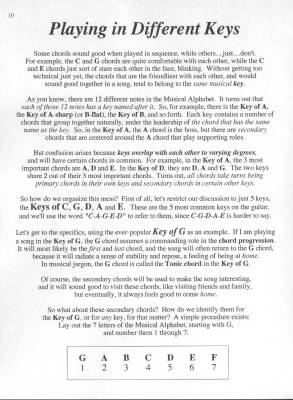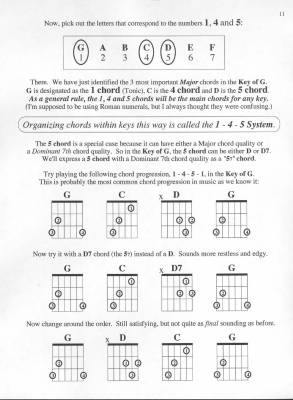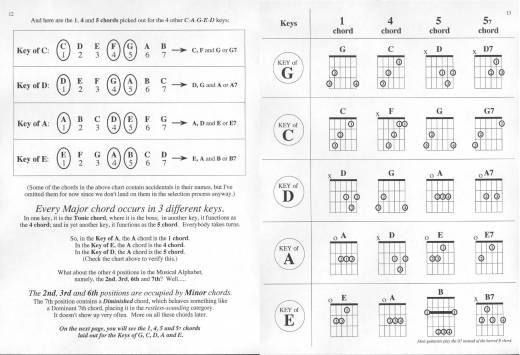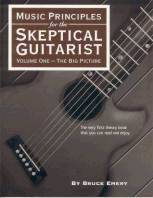Opens in a new window
Skeptical Guitarist Music Principles for the Skeptical Guitarist, Volume One: The Big Picture - Emery - Guitar - Book
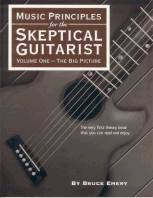
Additional Photos:
Great Additions
Description
- Composer/Author: EMERY, BRUCE
- Instrumentation: GUITAR
- Model # SGP-006
Author: Bruce Emery
Format: Book
Instrumentation: Guitar
In the First Approach, we see how major and minor chords are grouped into keys (chord families) according to the 1 - 4 - 5 and C-A-G-E-D Systems, with examples from popular music. Topics include the Big Fifteen chords, using the capo, finding the starting note, tuning, the Rhythm Changes and secondary dominant chords.
In the Second Approach, we start over from the beginning and fill in the details of how to use Major Scales to generate the five C-A-G-E-D chord families and how all 12 key are related through the Circle of Fifths, the cosmic nutshell of the entire musical universe. Topics include transposing from key to key, dominant seventh chords, triad spellings, the jazz turnaround, back cycling through the Circle, and relative minor keys. Plenty of examples.
Table of Contents
Format: Book
Instrumentation: Guitar
In the First Approach, we see how major and minor chords are grouped into keys (chord families) according to the 1 - 4 - 5 and C-A-G-E-D Systems, with examples from popular music. Topics include the Big Fifteen chords, using the capo, finding the starting note, tuning, the Rhythm Changes and secondary dominant chords.
In the Second Approach, we start over from the beginning and fill in the details of how to use Major Scales to generate the five C-A-G-E-D chord families and how all 12 key are related through the Circle of Fifths, the cosmic nutshell of the entire musical universe. Topics include transposing from key to key, dominant seventh chords, triad spellings, the jazz turnaround, back cycling through the Circle, and relative minor keys. Plenty of examples.
Table of Contents
- The First Approach
- Notes and pitches
- The layout of the notes
- Tuning the guitar
- Chords and chord quality
- The Big Fifteen chords
- Playing in different keys
- The 1-4-5 system
- C-A-G-E-D examples
- Chord Families
- The 1 and 5 chords
- Songs in different keys
- The 1, 4 and 5 chords Songs in different keys
- "Silent Night" in all 5 keys
- Choosing the right key
- Using the capo
- Quiz time for the 1-4-5's Finding the starting note
- Adding the Minor chords
- Songs in the Keys of G and C
- "Rhythm Changes" Secondary Dominants Bunches of useful chords (A-G)
- The Second Approach
- The Chromatic scale
- Layout on the neck
- The Major scale
- The Key of C
- Scale degrees and other keys
- The Key of G
- Worksheet for Major scales
- Traveling by Fifths
- Major scale summary
- The flat keys
- The fretboard and the keyboard
- Major scale exercises
- Back to Chord Families
- The C Harmonized Diatonic scale
- Major chords versus Minor chords
- Four combinations of Thirds Other
- Chord Families
- Worksheets for Chord Families
- C-A-G-E-D Chord Family summary Example: "Morning Has Broken"
- Full Chord Family summary
- Transposition chart
- Details of the 1-4-5 relationship
- The Dominant 7th chord
- Overlapping Chord Families
- Chord substitutions
- Triad spellings
- My Bio
- The Circle of Fifths
- More on Secondary Dominants
- Examples in the Key of C
- Down by a 5th = up by a 4th
- Backcycling through all the keys
- C-A-G-E-D Chord Family examples
- Mixing in the Minor chords
- The Jazz Turnaround
- "Morning Has Broken" again
- Yuletide Backcycling in a the C-A-G-E-D keys Starting notes
- Shortcuts in terminology
- The 4th of the 4th
- Major 7th and Minor 7th chords
- Minor keys
- C Major versus A Minor
- Three kinds of Minor scales
- Carols in the Keys of Am, Dm, and Em
- Appendix 1: Why the number "five"?
- Appendix 2: Key signatures
- Volume One in a nutshell
- One last quiz
Q & A
There are currently no questions for this product.
Reviews
There are currently no reviews for this product. Be the first to write one!

